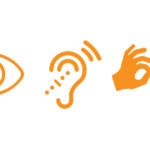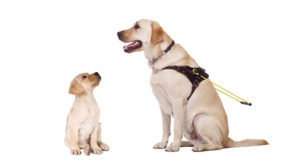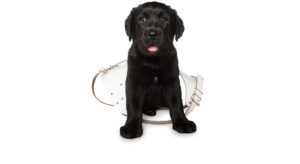How to Act Around a Guide Dog or Autism Assistance Dog
- Home
- How to Act Around a Guide Dog or Autism Assistance Dog
People often ask how to act around a Guide Dog or Autism Assistance Dog.
The simple answer is to just act normally and go about your business or journey.
A Guide or Assistance Dog has an important job to do! After undertaking two years of specialised training a Guide or an Autism Assistance Dog is carefully matched to their handler – a Western Australian living with low vision, disability or illness.
It is important to let a working dog concentrate on it’s job, and the commands of it’s handler.
By following a few simple rules you can help ensure the safety of the Guide or Autism Assistance Dog and their handler.
- Always talk to the handler, not their Guide or Assistance Dog.
Not only is it polite but when a Guide or Assistance Dog is working it needs to concentrate. Interruptions to their concentration can severely affect their handler’s safety. - If you think a handler needs assistance, ask them first. Never touch the person, the Guide or Assistance Dog, or the harness/coat without permission.
- Make sure your pet dog is on a lead and under control in public. If possible, move yourself and your pet away from the Guide or Assistance Dog.
- Never feed a Guide or Assistance Dog.
- Never pat a Guide or Assistance Dog.
- Never distract a Guide or Assistance Dog, with food, noises, talking to it, approaching or patting it.
Guide Dogs, Autism Assistance Dogs and those in training are easy to recognise:
- An orange “puppy-in-training” coat indicates that the Puppy in training is learning how to behave in a range of environments.
- A dog wearing a brown harness is a Guide Dog in training.
- A dog in a white harness with a high-vis flash is a Guide Dog working with their owner.
- An Autism Assistance Dog wears an orange jacket with text on it to identify it as an Autism Assistance Dog.

Downloadable Resources
Please download our Guide Dog Etiquette poster here.






